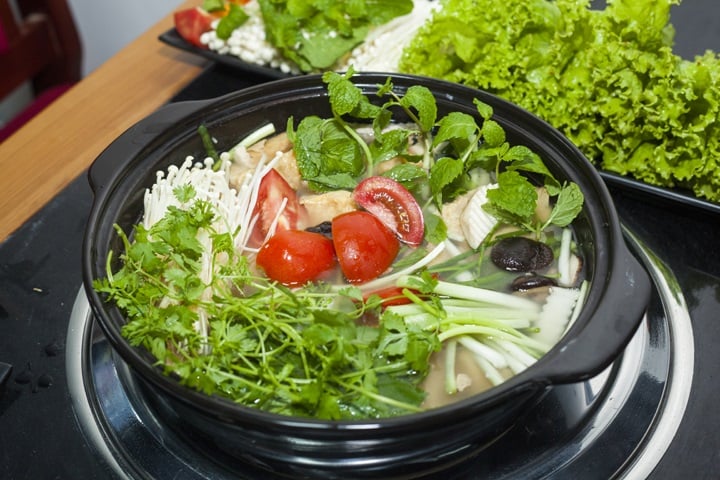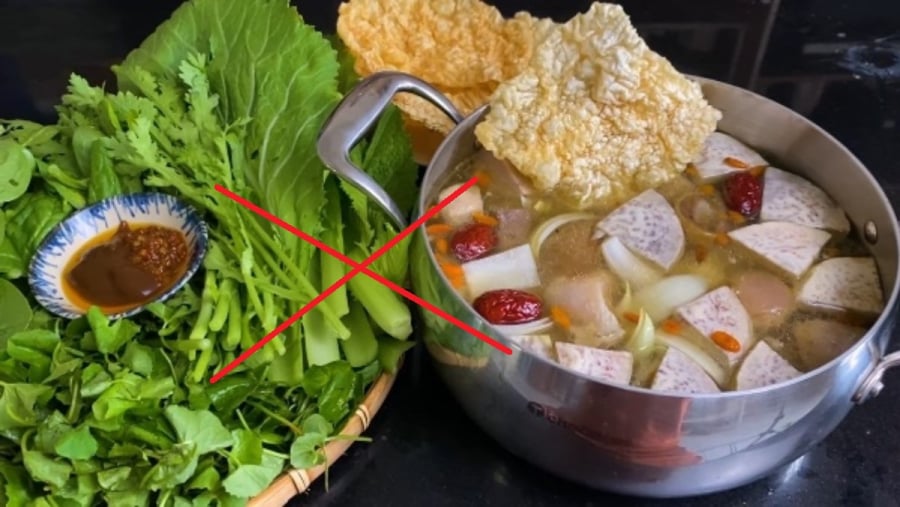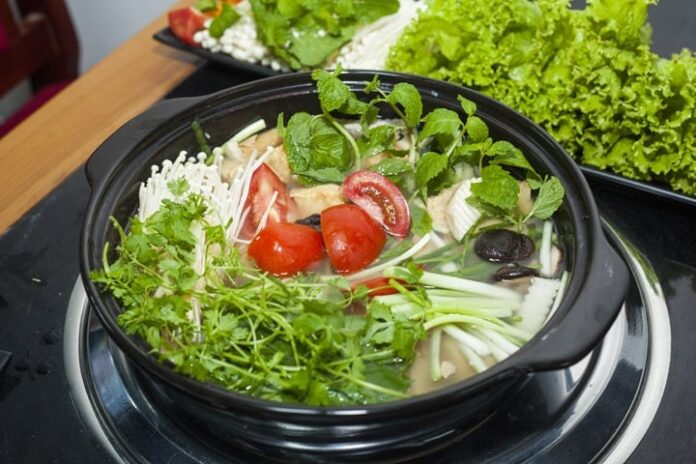When it comes to hot pot, it’s important to choose the right vegetables to dip. Combining random vegetables with the other components of your hot pot can be harmful to your health. Furthermore, some hot pots simply don’t go well with certain vegetables, as they can produce toxins.

6 Types of Vegetables You Shouldn’t Dip in Your Hot Pot
1. Wild Vegetables and Mushrooms
While many people enjoy eating wild vegetables and mushrooms, this can also be potentially dangerous. Medical herbalist Pham Anh Dao warns that not all mushrooms are safe to eat, and one should be cautious when picking and consuming wild mushrooms. Eating vegetables or mushrooms that contain toxins can lead to food poisoning and even death. Some mushroom types suitable for hot pots include enoki and oyster mushrooms.
2. Don’t Dip Mint in Chicken Hot Pot
According to Pham Anh Dao, in Eastern medicine, chicken is considered ‘wu jin’, belonging to the wood element and associated with the liver. On the other hand, mint has a warm and spicy nature that breaks up qi and reduces blood stasis. Combining chicken and mint can lead to symptoms such as dizziness, ringing in the ears, trembling, and itching.
Additionally, garlic and tomatoes are also considered incompatible with chicken hot pot.
3. Avoid Tomatoes in Seafood Hot Pot
It is common knowledge that vitamin C-rich foods do not go well with seafood. Tomatoes, being rich in vitamin C, when combined with pentavalent arsenic present in shrimp, crab, and shellfish, can form trioxide arsenic (a toxic compound). Consuming this combination in large quantities can lead to the risk of poisoning.
4. Don’t Dip Malabar Spinach in Beef Hot Pot
In Eastern medicine, beef has a warm nature, while Malabar spinach has a cold nature and is sour and slippery. This combination can cause stomach pain, ranging from mild indigestion to severe constipation.
5. Avoid Dipping Vegetables of Unknown Origin in Your Hot Pot
As advised by Associate Professor Dr. Nguyen Duy Thinh from the Faculty of Food Technology, Hanoi University of Science and Technology, it is crucial to choose clean vegetables with clear origins. Nowadays, some vegetables in the market are sprayed with pesticides, growth enhancers, or grown in polluted areas. After purchasing vegetables, it is essential to remove the roots and wash them thoroughly multiple times, soaking them in salted water or a vegetable cleaning solution.

6 Types of Vegetables You Shouldn’t Dip in Your Hot Pot
6. Avoid Vegetables That Can Cause Allergies
Experts advise against using vegetables that are prone to causing allergies or poisoning, such as bitter melon, wild mushrooms, wild vegetables, wild herbs, and itchy taro leaves, when preparing a hot pot.
Some Notes When Eating Hot Pot
- Don’t eat immediately after dipping: Allow the food to cool slightly before eating. Eating extremely hot food can cause burns to the mouth and esophagus without you realizing it.
- Don’t eat hot pot for too long: Hot pot is typically a social meal, and the dining time can be extended. Prolonged meals can overwork the stomach and other digestive organs, leading to long-term issues and reduced function.
- Wait for the pot to boil again before dipping: This is a common mistake that increases the risk of digestive disorders and poisoning due to bacteria that may not have been eliminated. Additionally, avoid eating undercooked dipped food to ensure the destruction of bacteria and parasites, as well as better digestion.
- Don’t overuse chili and chili oil: While many people enjoy a spicy hot pot, excessive amounts of chili can irritate the mouth, esophagus, and other parts of the digestive tract, potentially causing ulcers.
5 Foods You Should Never Reheat
The festive season is a time of culinary delights, with an abundance of food gracing our tables. However, it’s important to be mindful of the potential health hazards that come with reheating certain dishes. The following five festive favorites should be enjoyed in moderation and with caution, as excessive reheating can lead to a host of health issues.







































